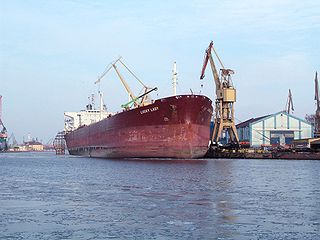At common law, damages are a remedy in the form of a monetary award to be paid to a claimant as compensation for loss or injury. To warrant the award, the claimant must show that a breach of duty has caused foreseeable loss. To be recognized at law, the loss must involve damage to property, or mental or physical injury; pure economic loss is rarely recognized for the award of damages.
Negligence is a failure to exercise appropriate care expected to be exercised in similar circumstances.

English tort law concerns the compensation for harm to people's rights to health and safety, a clean environment, property, their economic interests, or their reputations. A "tort" is a wrong in civil law, rather than criminal law, that usually requires a payment of money to make up for damage that is caused. Alongside contracts and unjust enrichment, tort law is usually seen as forming one of the three main pillars of the law of obligations.

Bolam v Friern Hospital Management Committee [1957] 1 WLR 582 is an English tort law case that lays down the typical rule for assessing the appropriate standard of reasonable care in negligence cases involving skilled professionals such as doctors. This rule is known as the Bolam test, and states that if a doctor reaches the standard of a responsible body of medical opinion, they are not negligent. Bolam was rejected in the 2015 Supreme Court decision of Montgomery v Lanarkshire Health Board in matters of informed consent.
Causation is the "causal relationship between the defendant's conduct and end result". In other words, causation provides a means of connecting conduct with a resulting effect, typically an injury. In criminal law, it is defined as the actus reus from which the specific injury or other effect arose and is combined with mens rea to comprise the elements of guilt. Causation only applies where a result has been achieved and therefore is immaterial with regard to inchoate offenses.
In English tort law, an individual may owe a duty of care to another, in order to ensure that they do not suffer any unreasonable harm or loss. If such a duty is found to be breached, a legal liability will be imposed upon the tortfeasor to compensate the victim for any losses they incur. The idea of individuals owing strangers a duty of care – where beforehand such duties were only found from contractual arrangements – developed at common law, throughout the 20th century. The doctrine was significantly developed in the case of Donoghue v Stevenson, where a woman succeeded in establishing a manufacturer of ginger beer owed her a duty of care, where it had been negligently produced. Following this, the duty concept has expanded into a coherent judicial test, which must be satisfied in order to claim in negligence.
Causation in English law concerns the legal tests of remoteness, causation and foreseeability in the tort of negligence. It is also relevant for English criminal law and English contract law.
In English law, remoteness between a cause of action and the loss or damage sustained as a result is addressed through a set of rules in both tort and contract, which limit the amount of compensatory damages available for a wrong.
In English law, a nervous shock is a psychiatric / mental illness or injury inflicted upon a person by intentional or negligent actions or omissions of another. Often it is a psychiatric disorder triggered by witnessing an accident, for example an injury caused to one's parents or spouse. Although the term "nervous shock" has been described as "inaccurate" and "misleading", it continues to be applied as a useful abbreviation for a complex concept. The possibility of recovering damages for nervous shock, particularly caused by negligence, is strongly limited in English law.

Wilkinson v Downton[1897] EWHC 1 (QB), [1897] 2 QB 57 is an English tort law decision in which the Common Law first recognised the tort of intentional infliction of mental shock. At the time, this was not covered under the law of negligence.

In RePolemis & Furness, Withy & Co Ltd (1921) is an English tort case on causation and remoteness in the law of negligence.

Overseas Tankship (UK) Ltd v Morts Dock and Engineering Co Ltd, commonly known as Wagon Mound , is a landmark tort law case, which imposed a remoteness rule for causation in negligence. The Privy Council held that a party can be held liable only for loss that was reasonably foreseeable. Contributory negligence on the part of the dock owners was also relevant in the decision, and was essential to the outcome, although not central to this case's legal significance.

Alcock v Chief Constable of South Yorkshire Police[1991] UKHL 5, [1992] 1 AC 310 is a leading English tort law case on liability for nervous shock. The case centred upon the liability of the police for the nervous shock suffered in consequence of the events of the Hillsborough disaster.
Chadwick v. British Railways Board [1967] 2 All ER 945 was an English High Court judgement, dealing with the possibility of recovering psychiatric harm suffered by helpers who have witnessed and assisted at an accident. The Court ruled that such helpers, as "primary victims" of the accident, could recover the damage caused by nervous shock in the same way as personal injury, unlike "secondary victims", who have merely witnessed the accident without being directly involved in it.

McLoughlin v O'Brian [1983] 1 AC 410 is an English tort law case, decided by the House of Lords, dealing with the possibility of recovering for psychiatric harm suffered as a result of an accident in which one's family was involved.
South Australia Asset Management Corporation v York Montague Ltd and Banque Bruxelles Lambert SA v Eagle Star Insurance Co Ltd [1996] UKHL 10 is a joined English contract law case on causation and remoteness of damage. It arose out of the property crash in the early 1990s, whereby banks were suing valuers for overpricing houses in order to recover the lost market value. Owners themselves often had little or no money, since they had fallen victim to negative equity, so mortgage lenders would pursue a valuer instead to recover some losses. The legal principle arising from the case is often referred to as the "SAAMCO principle".
Smith v Leech Brain & Co [1962] 2 QB 405 is a landmark English tort law case in negligence, concerning remoteness of damage or causation in law. It marked the establishment of the eggshell skull rule, the idea that an individual is held responsible for the full consequences of his negligence, regardless of extra, or special damage caused to others.

Attia v British Gas Plc [1988] QB 304 is an English tort law case, establishing that nervous shock from witnessing the destruction of personal property may be actionable. Prior to this case, a duty of care for an individual's mental health had not been established in situations not involving personal injury or the witnessing of such an event. The Court of Appeal ruled that British Gas were liable for the subsequent shock and depression of Mrs Attia, following the near total destruction of her home and possessions.

The eggshell rule is a well-established legal doctrine in common law, used in some tort law systems, with a similar doctrine applicable to criminal law. The rule states that, in a tort case, the unexpected frailty of the injured person is not a valid defense to the seriousness of any injury caused to them.

The floodgates principle, or the floodgates argument, is a legal principle which is sometimes applied by judges to restrict or limit the right to make claims for damages because of a concern that permitting a claimant to recover in such situations might open the metaphorical "floodgates" to large numbers of claims and lawsuits. The principle is most frequently cited in common law jurisdictions, and in English tort law in particular.









